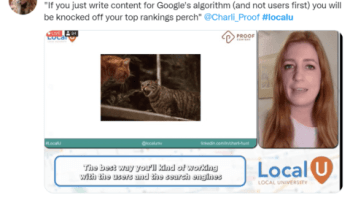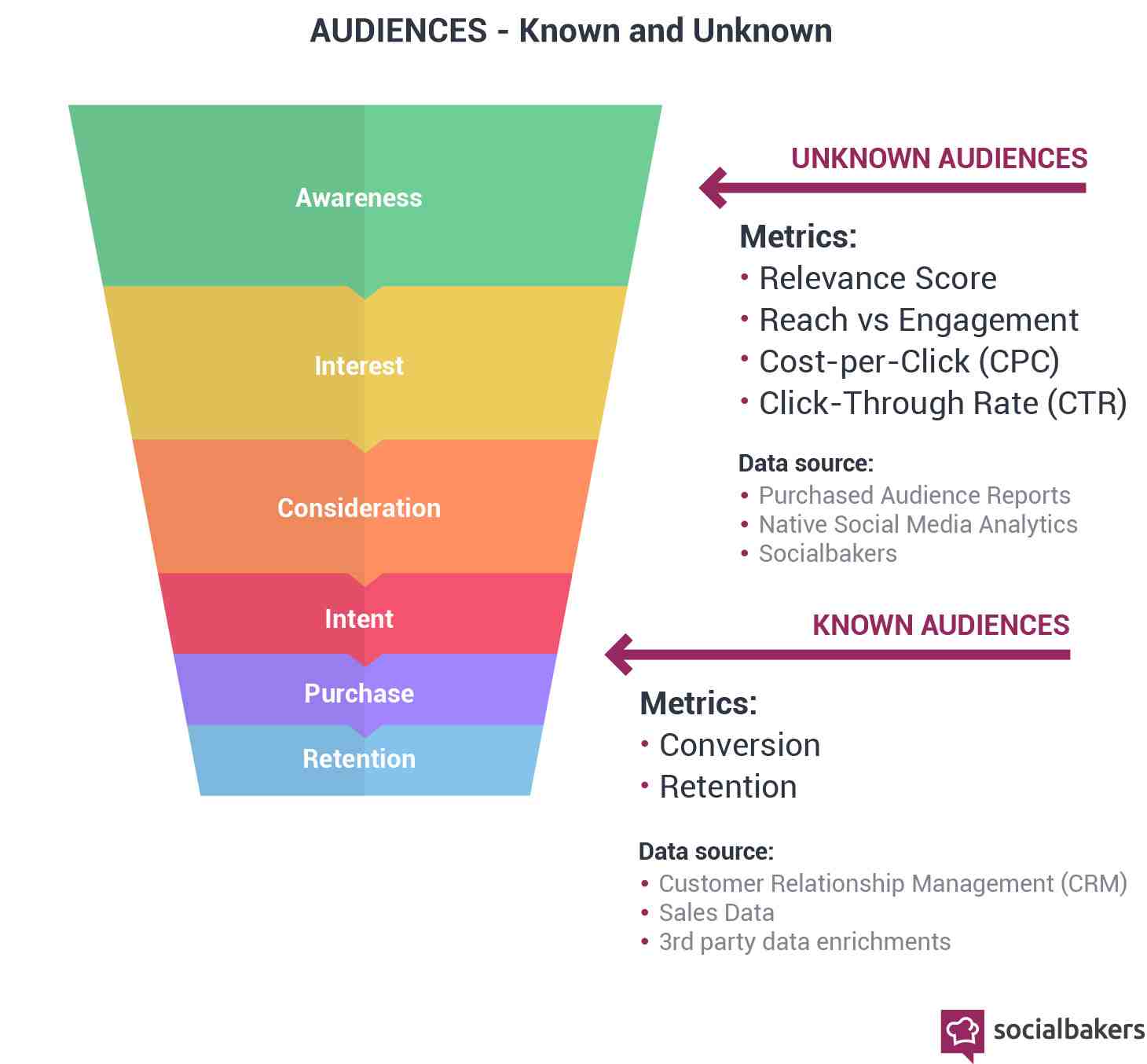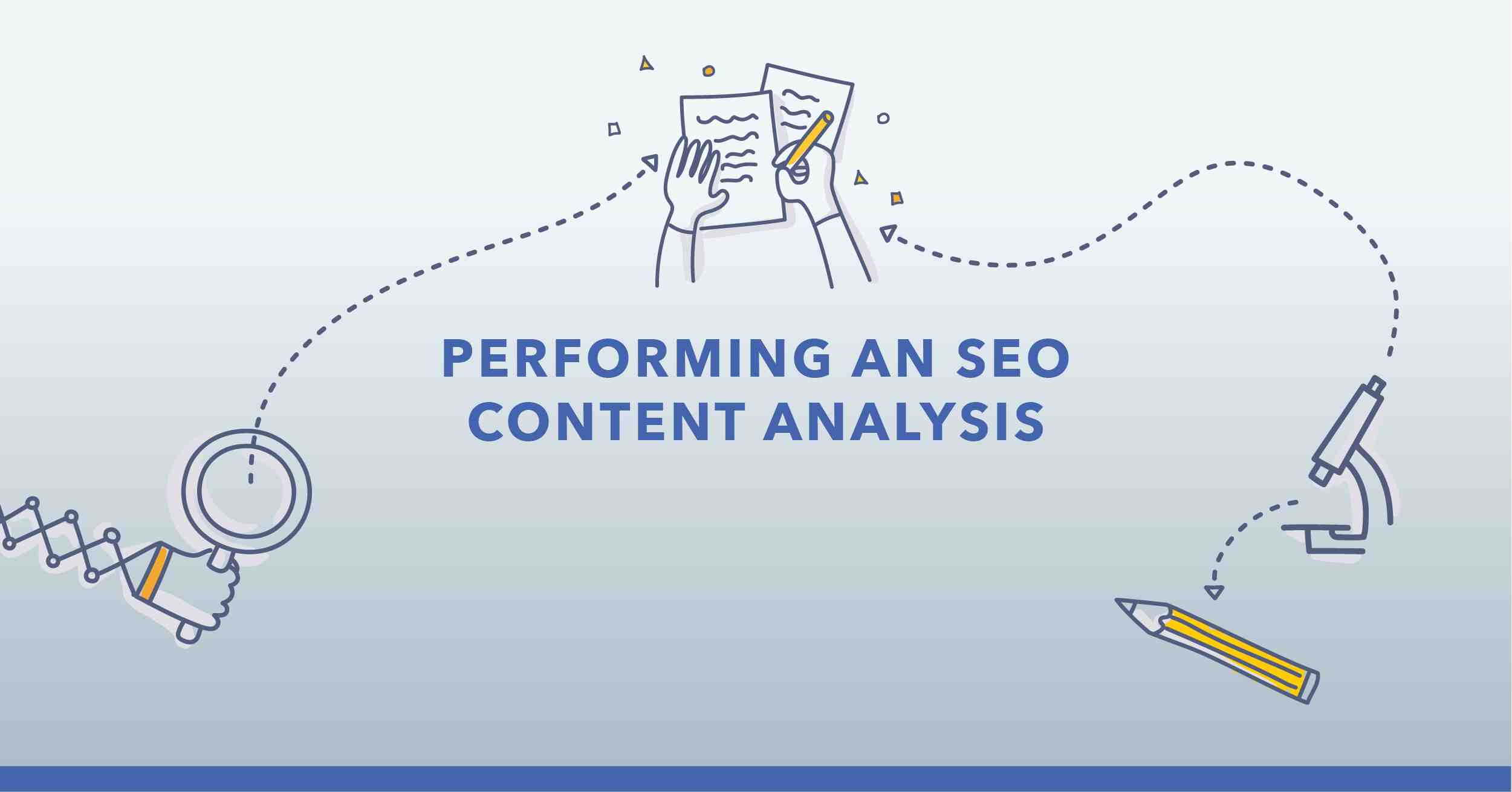How your customers find you can vary considerably. It can be based on their interests, needs or pain points.
Some people may already know exactly what they need and search for it on Google. Others may be just starting the research process. Others may already know what they need and compare to find the best source to buy from.
In this phase of your SEO research and planning, you would like to identify:
Your goal will be to map your target personas, purchase stages and keywords for each persona and purchase stage.
Persona research

You can start by using customer service data or information from your demographic information in Google Analytics. With this information, you can start creating target personas.
Below is an example of possible target personas for a real estate company.
Once you have your personalities and ideas about who they are, what they need, and what they are looking for, you will want to map out the possible steps they will take in their buying journey.
Buyer’s journey

Finally, you can add the possible keywords they want to search for and map them to the journey.
Map keywords to persona to the buyer’s journey

The goal of this phase is to identify all the possible ways you can be found and to make sure you have optimized content on your website that is targeted to those buying phases and keywords.
You start by identifying primary roots. As you evolve, you can go deeper into long-tail terms or semantically related keywords.
This will allow you to identify gaps and opportunities that were missed during your initial baseline and competing research. Some of these keywords will not be revealed unless you really understand your audience and their needs and pain points.
This phase will complete your research phase and give you all the information to create your content strategy and focus your SEO priorities on the page.
Evaluate your existing content

With your extensive keyword research, the next step is to look at the existing content on your site and see if it is optimized properly.
Before creating a content calendar or editorial strategy, it is ideal to revise your existing content. By reviewing your existing pages, you can decide which pages to remove, consolidate or optimize.
Some of the items you can look for include:
To perform a content review, export all your pages from your CMS or use an SEO review tool, such as Screaming Frog or Semrush Site Audit, to get a list of your site’s existing pages.
Consolidate all this data into a content audit spreadsheet. Your spreadsheet might look like this:
Assess your site’s content
Once you have collected all the data, go through the URLs and tag the pages:
How to optimize, modernize or consolidate pages
Once you’ve tagged all your pages, it’s time to optimize your content. Some pages may work well, but they can be updated to help them perform even better. Others may perform poorly and need to be optimized to rank.
Typically, this process will involve two steps:
Select the primary and secondary keywords for each page
The best way to collect this data is to use the Google Search Console to rank pages or your keyword database for pages that are not.
To collect data from the Google Search Console, click Performance & gt; Search results report:
You can click on a page to see the keywords it ranks for, and clicks, impressions, and average position for each:
This will help you identify keyword keywords for each page that you can add to your spreadsheet.
For each page, add the primary and secondary keyword keywords you want to use when performing the necessary content updates.
Revamp existing content
When optimizing pages, make sure you maintain or add the correct on-page SEO elements. Let’s review these:
The primary keyword should appear in:
All related secondary keywords should be incorporated naturally into the article. For each related keyword, add them in an H2 heading. Whatever the focus keyword is for each section, it should be in both the H2 heading and in the section after the heading.
Questions and answers
Questions and Answers are an easy way to expand your articles by finding related questions. Take the primary keyword and search for it on Google. Use the questions in the “People also ask” field as section headings:
The section heading with the question will be an H2. In the next section, answer the question as quickly and concisely as possible. Do not reproduce the question; instead, give the answer immediately.
If the question was “How do you appear in excerpts”, then the first sentence should answer the question: “To get into selected excerpts, ask questions and answer them using paragraphs, lists and quick answers.”
Use bullets! Google loves to provide bulleted answers, so where possible, answer the question and immediately add a bulleted list:
Use proper formatting to make content easy for people to read quickly. Here are a few suggestions for formatting your content:
Add 2-3 internal links to other relevant pages on the page. Keep your anchor text short. Then find at least 3-5 relevant pages on your site, and link to your landing pages. Each page on your site should contain as many links from other site pages as possible.
Add 2-3 external links to relevant pages. Good external links serve a strong purpose. They create a natural link card and link your sites with authoritative sources. Google wants to give more weight to a site that has good external links.
Add new content
If the article is thin, you can add new content to elaborate on key points.
Writing new content
Images
Content consolidation
When there are several short pages or articles that are all ranked by the same keyword, it may be ideal to group these articles into a longer, more comprehensive piece.
When consolidating articles, keep in mind:
Prioritize your fixes
Once you’ve created and tagged your spreadsheet and added targeted primary and secondary keywords, the final step is to prioritize and assign your optimizations based on traffic or keyword meaning.
If you have pages that target important keywords that do not rank well, move them to the top of the priority list.
If there are sites that have a lot of traffic and could perform better, these should also be prioritized.
At the end of this phase, you should have a comprehensive keyword list that you want linked to existing pages or branded to be created.
Mind the gap

In the early stages, you will want to pay attention to identifying person, content, and keyword gaps. If you do not have content targeted to any of your keywords, you will miss out on opportunities to reach your target audience.
Most sites will have a degree of cannibalization as the SEO and content plans go through different teams and stages.
Before spending significant resources on producing new content, first identify and maximize the content you already have, and then “take care of the gap” by creating a content plan that targets all keywords that have not been optimized.
Opinions expressed in this article are those of the guest author and not necessarily Search Engine Land. Staff authors are listed here.
New on Search Engine Land
About The Author
Marcela De Vivo is an industry veteran with more than 20 years of experience in digital marketing, Marcela travels the world talking about SEO, data-driven marketing strategies and workflow automation and optimization. Marcela owns a digital marketing agency called Gryffin based in California.
What are the 3 pillars of SEO?
Instead, SEO is supported by three different pillars: discovery, relevance, and authority. Make sure your website keeps these three forward-looking SEO concepts in mind and you have a content marketing strategy that will increase your place on search engine results pages (SERPs).
What are the 3 steps to successful SEO? The 3 steps to any successful SEO campaign
- Step # 1 Get to know your buyers and their search habits. …
- Step # 2 Optimize your site and add new content. …
- Step # 3 Maximize conversions from site visitors.
What is backlink equity?
What is Link equity? Link equity is the value that a site provides to another site with a follow-backlink to that site to increase organic rankings on Google.
What is an example of a backlink? Backlinks are links from one page of a site to another. If someone links to your site, then you have a backlink from them. If you link to another website then they have a backlink from you. For example, these words link to YouTube, so they now have a backlink from us.
What is a backlink and how does it work?
Backlinks (also known as “inbound links”, “inbound links” or “one-way links”) are links from one site to a page on another site. Google and other major search engines consider backlinks as “votes” for a particular page. Pages with a high number of backlinks tend to have high rankings in organic search engines.
What is a backlink how do they work?
Backlinks occur when a site links to another site. Also called inbound or inbound links, link backlinks through external sites. These links from external domains point to pages on your own domain.
What do backlinks do for your website?
Links to sites other than your own that go back to a page on your site. Backlinks are also called inbound links because they represent the traffic of another site coming to your own site. The quality and quantity of your backlinks can help you rank higher in search engines like Google and Bing.
What does link equity mean?
Link equity, once colloquially referred to as “link juice”, is a search engine ranking factor based on the idea that certain links transfer value and authority from one page to another. This value depends on a number of factors, such as link authority, current relevance, HTTP status, and more.
What is link equity SEO?
What is link equity in SEO? Link equity or “link juice” is the idea that reputation / authority is transferred when one page links to another, and therefore shares some of the SEO value between the pages.
How much is a link worth?
| Chainlink Price | $ 6.35 |
|---|---|
| Price change 24 hours | -0.579 USD 8.35% |
| 24 hours low / 24 hours high | 5.64 USD / 7.31 USD |
| Trading volume 24 hours | 1,093,404,607.66 USD 17.56% |
| Volume / market value | 0.3685 |
What is a backlink meaning?
A backlink is a link that is created when one site links to another. Backlinks are also called “inbound links” or “inbound links”. Backlinks are important for SEO.
Whats the meaning of backlink?
A backlink is an external link that leads to a website or a web page. The quality of a backlink depends on the online reputation of that site or web page and its credibility in the eyes of the search engines. Backlinks are important criteria for organic ranking (SEO).
What is a backlink in a website?
Links to sites other than your own that go back to a page on your site. Backlinks are also called inbound links because they represent the traffic of another site coming to your own site. The quality and quantity of your backlinks can help you rank higher in search engines like Google and Bing.
What is HVAC SEO?
HVAC SEO (search engine optimization) is the process of creating and editing website content and code so that your website ranks well in search engines like Google, Bing and Yahoo. To optimize your site for search, you need to make it fast, secure, mobile-friendly and packed with unique, remarkable content.
What is SEO and why do I need it? Search engine optimization, or SEO, is a strategy to improve your site’s rankings in search engine results. It involves identifying what keywords and phrases your target audience uses when looking for products or services like yours, and then working toward ranking well for those searches.
What is SEO & How it works?
Well, SEO stands for ‘Search Engine Optimization’, which is the process of getting traffic from free, organic, editorial or natural search results in search engines. It aims to improve your site’s ranking on search results pages. Remember, the higher the website is listed, the more people will see it.
Can I do SEO on my own?
You can definitely do SEO yourself or DIY SEO (Do It Yourself SEO). With some research and lots of practice, anyone can learn how to do SEO for their business. A quick way to get started with SEO is to enter your URL here and then focus your SEO efforts on the recommended action points.
How does SEO work in simple words?
How does SEO work? SEO works by optimizing a site’s pages, conducting keyword research and earning inbound links. You can generally see results of SEO efforts once the web page has been crawled and indexed by a search engine.
What is SEO?
The definition of an SEO company is a company that collaborates with companies like yours to increase your visibility in search engines. Increased search engine visibility means more traffic to your site and ultimately more leads, phone calls and sales.
What is an example of SEO?
How they determine the “best” result is based on an algorithm that takes into account authority, relevance to the query, loading speed and more. (For example, Google has over 200 ranking factors in their algorithm.) In most cases, when people think of “search engine optimization”, they think of “Google SEO”.
What is SEO in simple words?
SEO stands for search engine optimization, which is a set of practices designed to improve the appearance and ranking of web pages in organic search results.
What are the three stages of ranking?
The three stages of ranking are: discovery, relevance and authority.
What are the key stages of SEO? Introduction to SEO’s 3 Stages The 3 stages are: The Tune-Up stage. Stage of construction. Expand-out phase.
Which of these questions does keyword research help you answer?
Keyword research gives you specific search data that can help you answer questions like: What are people searching for? How many people are searching for it? In what format do they want that information?
What does keyword research help you answer?
Keyword research provides valuable insight into the queries that your target audience is actually searching on Google. The insights you can gain in these actual search terms can help inform both the content strategy and your major marketing strategy.
What is the purpose of a keyword search?
The purpose of conducting keyword research is to find words and phrases that users search for on Google and other major search engines. These terms are related to the products and services on your site. Now, more than ever, keywords have an increasing focus on search intent.
What are keyword questions?
Question keywords are used when a person enters a complete and specific question into Google. For example, instead of using a general keyword like “Diabetes”, a query keyword would be “how do I know if I have diabetes?”.

